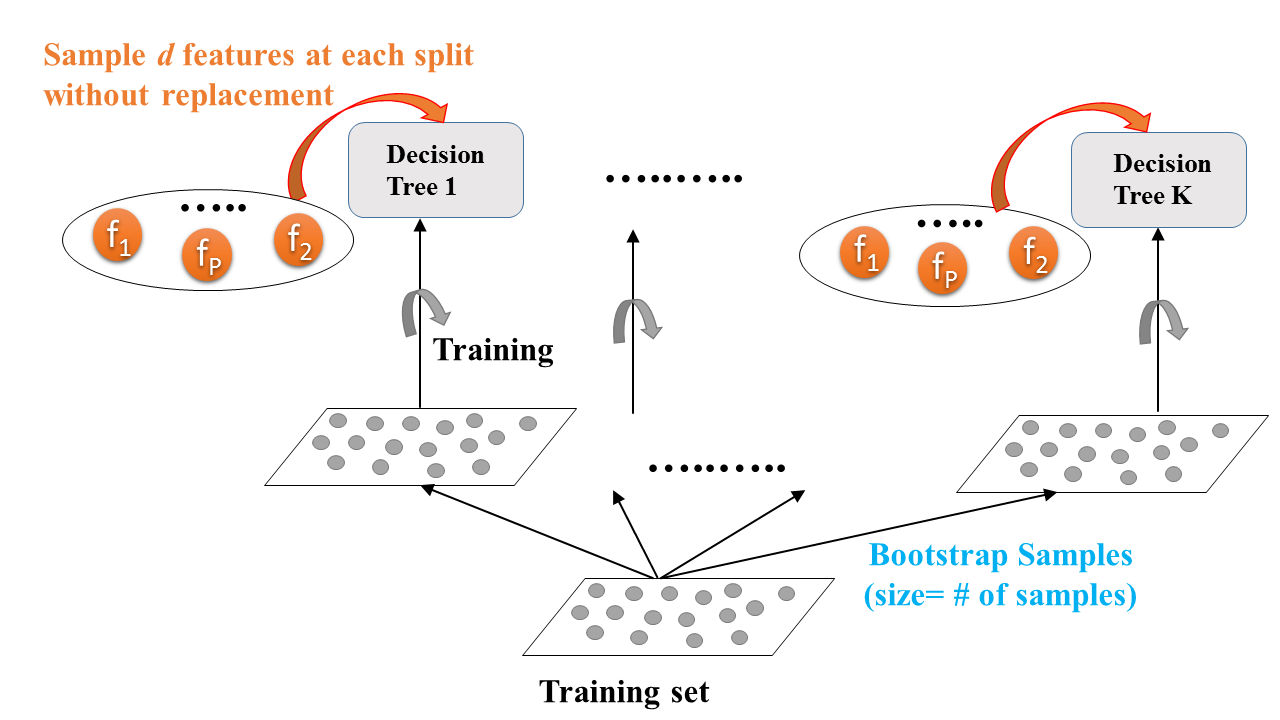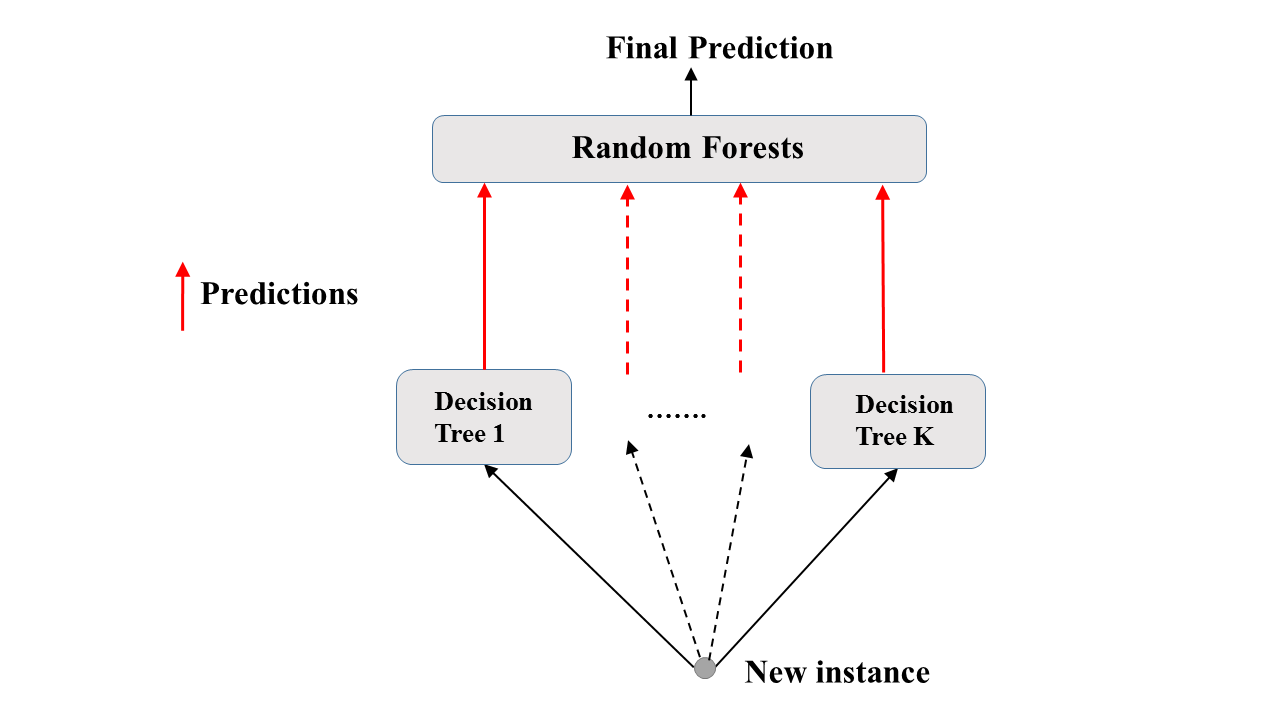Random Forests
Machine Learning with Tree-Based Models in Python

Elie Kawerk
Data Scientist
Bagging
Base estimator: Decision Tree, Logistic Regression, Neural Net, ...
Each estimator is trained on a distinct bootstrap sample of the training set
Estimators use all features for training and prediction
Further Diversity with Random Forests
Base estimator: Decision Tree
Each estimator is trained on a different bootstrap sample having the same size as the training set
RF introduces further randomization in the training of individual trees
$d$ features are sampled at each node without replacement
( $d < \text{total number of features}$ )
Random Forests: Training

Random Forests: Prediction

Random Forests: Classification & Regression
Classification:
- Aggregates predictions by majority voting
RandomForestClassifierin scikit-learn
Regression:
- Aggregates predictions through averaging
RandomForestRegressorin scikit-learn
Random Forests Regressor in sklearn (auto dataset)
# Basic imports
from sklearn.ensemble import RandomForestRegressor
from sklearn.model_selection import train_test_split
from sklearn.metrics import mean_squared_error as MSE
# Set seed for reproducibility
SEED = 1
# Split dataset into 70% train and 30% test
X_train, X_test, y_train, y_test = train_test_split(X, y,
test_size=0.3,
random_state=SEED)
# Instantiate a random forests regressor 'rf' 400 estimators rf = RandomForestRegressor(n_estimators=400, min_samples_leaf=0.12, random_state=SEED)# Fit 'rf' to the training set rf.fit(X_train, y_train) # Predict the test set labels 'y_pred' y_pred = rf.predict(X_test)
# Evaluate the test set RMSE
rmse_test = MSE(y_test, y_pred)**(1/2)
# Print the test set RMSE
print('Test set RMSE of rf: {:.2f}'.format(rmse_test))
Test set RMSE of rf: 3.98
Feature Importance
Tree-based methods: enable measuring the importance of each feature in prediction.
In sklearn:
- how much the tree nodes use a particular feature (weighted average) to reduce impurity
- accessed using the attribute
feature_importance_
Feature Importance in sklearn
import pandas as pd
import matplotlib.pyplot as plt
# Create a pd.Series of features importances
importances_rf = pd.Series(rf.feature_importances_, index = X.columns)
# Sort importances_rf
sorted_importances_rf = importances_rf.sort_values()
# Make a horizontal bar plot
sorted_importances_rf.plot(kind='barh', color='lightgreen'); plt.show()
Feature Importance in sklearn

Let's practice!
Machine Learning with Tree-Based Models in Python

